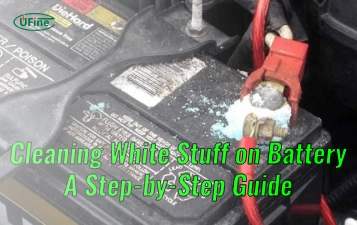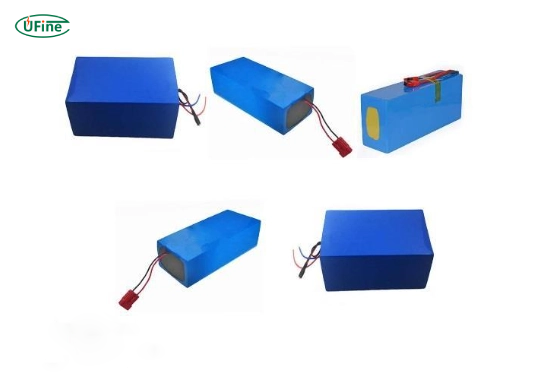What is great power battery technology, and why is lithium the best choice? Great power battery technology refers to advanced, high-performance energy storage systems capable of delivering large amounts of power over extended periods. These batteries are essential for modern applications such as electric vehicles, solar energy storage, and industrial machinery. Among the available options, lithium battery solutions stand out for their superior performance, longer lifespan, and unmatched efficiency.
This comprehensive guide’ll dive deep into great power batteries, explain how they work, and explore the benefits of lithium-based solutions. Whether you’re researching energy storage for home, business, or transportation, this article gives you the insights you need to make informed choices.
Part 1. What is a great power battery?
A great power battery is a high-capacity, high-efficiency energy storage device designed to supply power reliably across demanding applications. These batteries are engineered to handle:
- High discharge rates
- Long charge/discharge cycles
- Consistent voltage output
- Rapid charging abilities
They’re commonly used in:
- Electric vehicles (EVs)
- Solar and wind energy systems
- Industrial equipment
- Medical devices
- Backup power systems
Unlike basic batteries in household electronics, great power batteries are built for performance, longevity, and safety. Their structure includes advanced chemistry, smart Battery Management Systems (BMS), and features that surpass traditional lead-acid or nickel-based batteries.
Artikel Terkait: Differences Between Power Battery and Energy Battery
Part 2. Why is lithium used in great power batteries?
Lithium is used in great power batteries because it offers energy density, safety, and cycle life.
Lithium batteries have become the gold standard in modern energy storage. Here’s why:
- Lightweight: Lithium is the lightest metal, making batteries more portable.
- High energy density: Stores more energy in a smaller size.
- Long cycle life: Can be charged and discharged thousands of times.
- Fast charging: Charges 4–5x faster than lead-acid batteries.
- Low self-discharge: Retains power when not in use.
- Safe operation: With a proper BMS, lithium batteries are among the safest available.
These features make lithium ideal for great power battery applications, especially where space, efficiency, and longevity matter.
Part 3. How do great power lithium batteries work?
Great power lithium batteries work by moving lithium ions between electrodes to store and release energy.
The basic working principle is this:
- Charging: Lithium ions move via an electrolyte from the cathode (positive electrode) to the anode (negative electrode).
- Discharging: When power is needed, the ions return to the cathode, creating an electric current.
The battery is made of:
- Cathode (usually lithium cobalt oxide, lithium iron phosphate, etc.)
- Anode (commonly graphite)
- Electrolyte (a lithium salt in a solvent)
- Separator (a membrane that blocks short circuits)
What sets great power batteries apart is the quality of materials and engineering. These batteries are designed to withstand:
- High load applications
- Fast charging
- Temperature extremes
- Long-term usage without degradation
Part 4. What are the benefits of great-power lithium batteries?
Here are the main benefits of using lithium-based great power batteries:
1. Longer lifespan
Lithium batteries can last 3,000–5,000 charge cycles, compared to just 300–500 cycles for lead-acid batteries. That’s 8–15 years of regular use.
2. High energy efficiency
They offer up to 95% round-trip efficiency, meaning very little energy is lost during charging and discharging.
3. Lightweight and compact
Lithium batteries are up to 70% lighter than lead-acid alternatives. This is crucial for electric vehicles, drones, and portable systems.
4. Fast charging
Lithium batteries can be charged in 1–2 hours, much faster than the 6–8 hours required for older batteries.
5. Low maintenance
No need for water refilling or equalization charging. Just plug in and go.
6. Built-in safety
Modern lithium batteries include BMS (Battery Management Systems) to prevent overheating, overcharging, and short circuits.
Part 5. Where are great power batteries used?
Thanks to their strength and flexibility, great-power lithium batteries are used across a wide range of industries:
Electric Vehicles (EVs)
Lithium batteries power Tesla, BYD, NIO, and other EVs, offering long-range and fast charging.
Solar Energy Storage
Homeowners and businesses use them to store solar energy during the day for use at night or during outages.
Marine and RVs
Compact, lightweight lithium batteries are perfect for boats, campervans, and off-grid travel.
Telecommunications
Base stations and mobile towers rely on lithium batteries for backup power.
Industrial Equipment
Forklifts, robots, and construction tools benefit from high-discharge lithium batteries.
Medical Devices
Lithium batteries ensure uninterrupted operation from portable oxygen concentrators to mobile medical units.
Part 6. What is the difference between lithium-ion and LiFePO4 batteries?
Lithium-ion and LiFePO4 batteries are both lithium-based but differ in chemistry, performance, and safety.
Key Differences Explained
Lithium-ion batteries (often using cobalt-based materials like NMC – Nickel Manganese Cobalt) are known for high energy density, making them ideal for smartphones, laptops, and electric vehicles.
LiFePO4 batteries (Lithium Iron Phosphate) are a newer type of lithium battery that trades a bit of energy density for more excellent safety, longer lifespan, and thermal stability.
Let’s break this down:
- Energy Density: Lithium-ion packs more energy into a smaller space.
- Lifespan: LiFePO4 batteries can last up to 5,000 cycles; lithium-ion typically lasts 1,000–2,000 cycles.
- Safety: LiFePO4 is more stable and less likely to overheat or catch fire.
- Charging Speed: Lithium-ion generally charges slightly faster.
- Cost: LiFePO4 is often more expensive upfront but cheaper over time due to its longer life.
Comparison Table: Lithium-ion vs LiFePO4
| Feature | Lithium-Ion (NMC) | LiFePO4 (Lithium Iron Phosphate) |
|---|---|---|
| Energy Density | 150–200 Wh/kg | 90–120 Wh/kg |
| Charge Cycles | 1,000–2,000 cycles | 3,000–5,000 cycles |
| Lifespan | 3–7 years | 8–15 years |
| Charging Time | 1–2 hours | 1.5–3 hours |
| Operating Temperature | 0°C to 45°C | -20°C to 60°C |
| Safety Rating | Moderate | Very High |
| Fire/Explosion Risk | Higher | Very low |
| Cost per kWh (est.) | ~$150–200 | ~$200–250 |
If you want maximum safety and long-term savings, use LiFePO4. For higher energy in tight spaces, lithium-ion might be better.
Part 7. Are great power lithium batteries eco-friendly?
Yes – lithium batteries are more eco-friendly than older battery types, but not without challenges.
Eco Benefits:
- A longer lifespan means fewer replacements and less waste.
- High efficiency reduces energy losses.
- No heavy metals like lead or cadmium.
- Compatible with renewable energy like solar and wind.
Concerns:
- Mining lithium can impact the environment.
- Battery disposal must be handled correctly.
- Recycling infrastructure is still growing.
Many companies now focus on closed-loop recycling systems to reuse lithium, cobalt, and other elements, making the process more sustainable.
Part 8. How to choose the right great power battery?
Here’s a simple checklist to help you pick the right battery:
- Know your application: EV, solar, backup, etc.
- Check voltage and capacity: Match your system’s needs.
- Look at cycle life: Aim for 3,000+ cycles.
- Review charging time: Faster is better if it is time-sensitive.
- Ensure safety features: BMS, thermal protection, etc.
- Check size and weight: Especially for mobile uses.
- Compare price per cycle: Not just upfront cost.
- Choose a trusted brand: Look for certifications and reviews.
Part 9. What is the future of great power battery technology?
The future of great power batteries is smarter, safer, and more sustainable.
Emerging Trends:
- Solid-state batteries: No liquid electrolytes, so they are safer and more compact.
- Silicon anodes: Boost energy density by 20–40%.
- Battery recycling: Recovering 95% of critical materials.
- Second-life batteries: Reusing EV batteries for homes.
- AI-powered BMS: Smarter monitoring and longer battery life.
As demand for clean energy grows, expect rapid innovation in materials and design.
Part 10. How can you maintain a great power lithium battery?
Even though lithium batteries are low-maintenance, these tips can keep them running longer:
- Don’t deep discharge: Keep charge above 20%.
- Avoid extreme temperatures: The ideal range is 10°C–30°C.
- Use a compatible charger: Match voltage and current ratings.
- Update firmware: Some smart batteries have software updates.
- Store properly: Cool, dry place at 40–60% charge for storage.
Part 11. FAQs about great power battery
What makes a battery a “great power battery”?
A great power battery is designed for high-capacity, high-performance use in demanding environments like EVs and solar systems. It offers long life, fast charging, and consistent output.
Are lithium batteries better than lead-acid?
Yes. Lithium batteries last longer, charge faster, weigh less, and require less maintenance than lead-acid batteries.
What is a BMS in a battery?
A Battery Management System (BMS) protects the battery from overcharging, overheating, and short circuits, ensuring safe and efficient operation.
Can I use a great power battery for solar storage?
Absolutely. Lithium-based great power batteries are ideal for storing solar energy due to their efficiency, fast charging, and long lifespan.
How long do great-power lithium batteries last?
Typically, 8–15 years or 3,000–5,000 cycles, depending on the type and usage conditions.
Related Tags:
More Articles

White Stuff on Battery Terminals: A Step-by-Step Cleaning and Maintenance Guide
White stuff on battery terminals is corrosion. Learn how to clean it safely, prevent damage, and keep your battery running strong with simple steps.
Understanding How Glass Mat Batteries Work: Technology, Benefits, and Limitations
Glass mat batteries power cars, RVs, and solar systems. Learn how they work, their benefits, and what to consider before choosing one.
A Buyer’s Guide for AA Size Lithium Battery
Discover the power of AA size lithium batteries—types, voltage, capacity, and more! Learn how to choose the best one for your needs. Read now!
Li-Ion Battery Prices – Where to Buy Cheap & Safe
Discover li-ion cell prices, key market factors, and how to find affordable custom batteries from top suppliers like Ufine Battery.
How Long Does a 2200mAh Battery Last?
Discover everything about 2200mAh batteries—types, charging time, lifespan, and whether it’s enough for your device.




